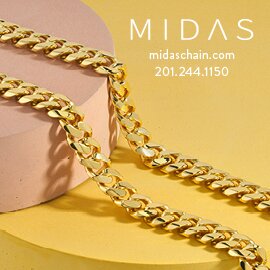By the time you read this, you will be a week or so away from travelling to the shows in Las Vegas. 1993 seems an eon ago when JCK began the westward migration of the industry show circuit to Las Vegas. The industry since then changed considerably on both sides of the sales counter. The Internet was just starting to be used for email if indeed your company had email. Today, a frequent topic of conversation and strategic thought is given to the use of the Internet to actually do business.
The manufacturing community was largely domestic and manufacturers were just beginning to form relationships with manufacturers in Hong Kong and India. Today, the domestic jewelry manufacturers are a much smaller segment of the business as the Chinese and the Indians have taken over more and more of the manufacturing function.
Then, DeBeers was a marketing powerhouse driving demand for diamonds through various programs geared to both consumers and the trade including both manufacturers and retailers. DeBeers advertising was heavy in print gearing itself to both the bridal and the post bridal markets. Their television advertising was compelling and persuasive for so many diamond products – The Tennis Bracelet, The Three Stone Ring (Yesterday, Today, and Tomorrow), theTwenty-fifth Anniversary Diamond, and the Diamond Anniversary Ring. DeBeers also initiated the notion of how much to spend for the purchase of a diamond engagement ring by relating it to so many months salary to be allocated for the diamond engagement ring.
The Diamond Promotion Service was the DeBeers entity charged with personally communicating the DeBeers message and training directly to jewelry retailers throughout the U.S. The DPS was an actual sales team charged with selling the DeBeers message programs and products to retail jewelers. Today, no one leads the parade extolling the diamond’s significance, and value to the marketplace either at the consumer or trade levels. The DPS is gone. There has been no new product developed and sold successfully save the current two stone diamond ring now being advertised by Jarrod. The jury is out on the appeal and results of this concept. For my money, Yesterday, Today, and tomorrow was a much stronger concept.
Today, we have man-made diamonds made in factories, turning the story of the diamond as a symbol of love to one of man-made diamonds being a better ecological choice than diamonds mined from the earth, presumably playing on the Millennials’ desire, demand, and preference for more acceptable green products.
And, speaking of Millennials, their counterparts in 1993 were significantly different than today’s consumers. Brides and grooms were younger and less well educated. Today,they are better educated, many with graduate degrees for both the bride and the groom.For wedding information they read Brides and Modern Bride. Today, it’s The Knot.
In 1993, an ounce of gold sold for $393 per troy ounce. Today it is $1257. Silver sold for $4.30 per troy ounce in 1993. Today it is $16.80. Platinum sold for $375 per troy ounce. Today, platinum sells for $925 per troy ounce. These increases in precious metals prices have had a significant impact on the retail prices of jewelry products and consequently sales of gold, silver, and platinum are also seriously affected. Of perhaps greater importance perhaps, is the effect precious metal pricing has on product design and development over this 24-year period. It stands to reason that the unit sales of jewelry are impacted with these price movements. Is it any wonder that wedding rings, as an example, are now offered in different metals such as titanium in order to keep prices at what is perceived to be an affordable level.
Is it any wonder that retail sales of silver jewelry have literally gone through the roof as the price of gold has nearly tripled since 1993! Similarly, silver product design has moved from lightweight to more generously weighted product.
Platinum seems to be squarely anchored in the bridal market for engagement rings and to a lesser degree men’s wedding rings,
This little trip down memory lane has a point. According to the Department of the Census, retail sales of jewelry in jewelry, luggage, and leather stores plus the separate category of only jewelry stores (who knows why there are two such categories of retailers selling jewelry?), sales amounted to $34 billion in 1993. In the latest period (2015) sales were $65.7 billion. While total retail sales from every category amounted to $1.235 trillion in Q4 of 2016, e-commerce sellers accounted for 8.3% of sales up nicely from 2015’s share of 7.6%.
Despite the somewhat hysterical, ominous warnings some forecast, consumers still continue to patronize retailers. The analogy of television’s impact on radio, it seems to me, is applicable to the retail vs. the Internet story. The Internet will gain market share over time even in jewelry just as QVC and HSN grew, as did jewelry retail sales grew.
Focus on your business. Focus on customer service. Focus on the products you sell. Decide which market segments where you place your focus. And most of all communicate with your target markets every way you can. It worked then and it works now!

